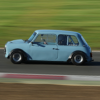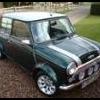As Cooperman suggested, the very major problem is that ALL alloys have a limited fatigue life. You can pick an alloy that is almsot as strong as steel, but its fatigue properties are nowhere near. Steel stressed to below about 45% of its ultimate load capability has an essentially infinite fatigue life, alloy does not. How are you going to do testing equivalent to several hundred thousand miles of driving, on a variety of roads, some not very good? Basically, doing the testing to ensure that they are safe is unfeasible, and the manufacturers of similar items have probably not been able to do it either.
I have seen one where the main part of the arm, instead of the standard cast tube, was basically a channel section, with far less torsional stiffness, possibly as mauch as a factor of 20 compared to a tube. The main load on the lever part of the arm is in torsion, as the wheel is outboard of the end of the arm. The vertical load should, with a normal sized wheel, pass through the hub bearing centre, which is clearly outboard of the arm, hence the torsion. Torsional flexing, which must happen, is not good for the handling as it causes camber change, but far worse than that, it will certainly lead to fatigue failure.
Those parts currently on the market are only suitable for competition use, where the mileage is limited so the accumulated fatigue damage is far less than in a road car.
I suggest that you abandon this idea before you kill someone, as you surely will if you proceed. Or, as has been suggested, make fabricated STEEL arms, but do make it tubular as the tube is the lightest shape which gives adequate torsional stiffness. The early arms were fabricated in that way. Issigonis knew exactly what he was doing.



















